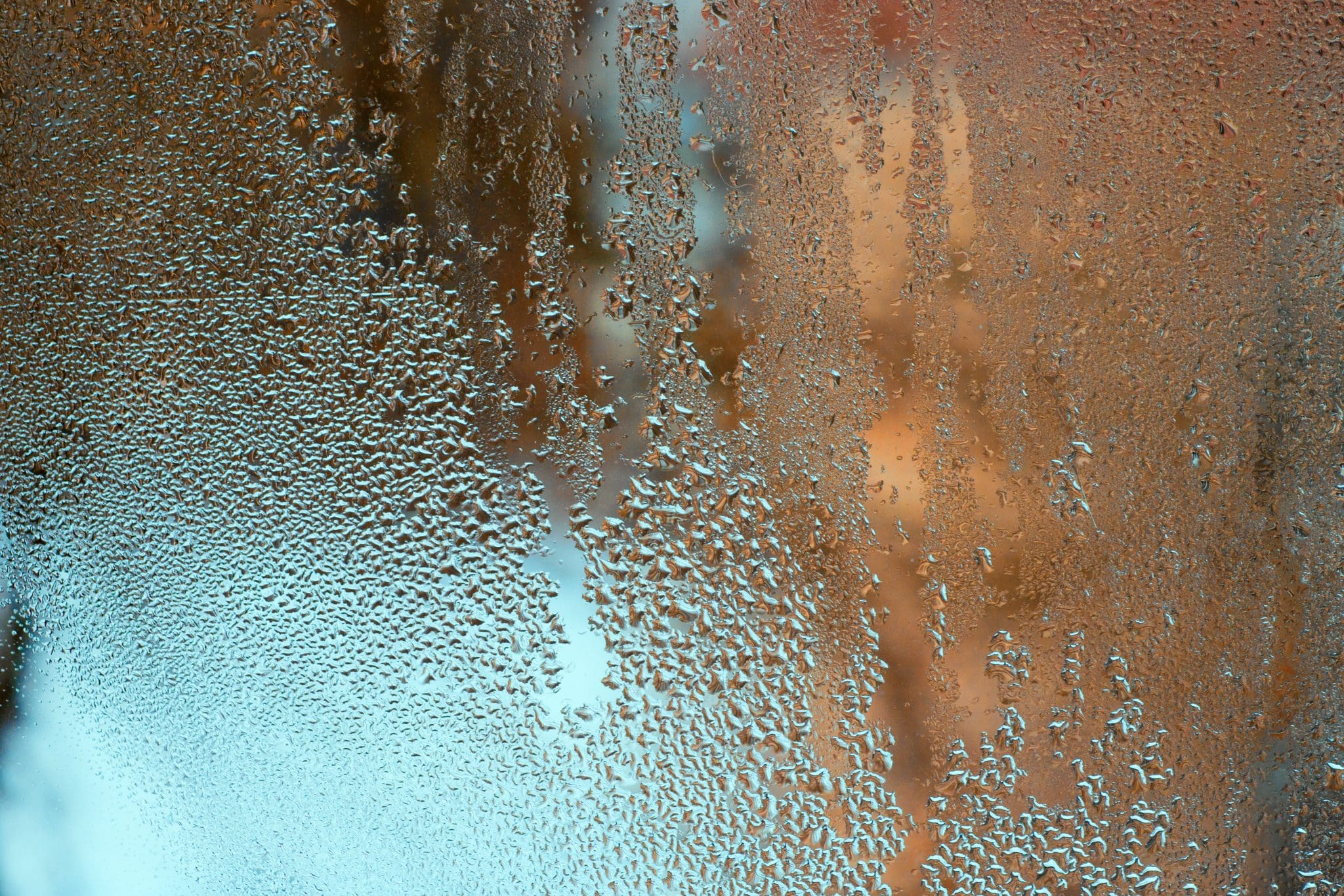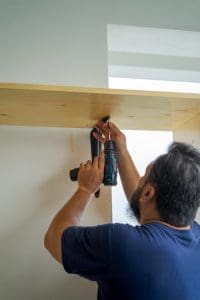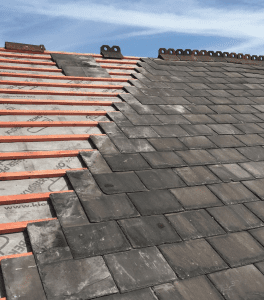Condensation can be a common issue in many homes, especially during the colder months. It often appears as water droplets forming on the inside of windows or walls, leading to damp patches, peeling wallpaper, black mould, and even a musty smell. Knowing what causes condensation and how to reduce it is essential for maintaining a dry, healthy, and comfortable living environment.
At 3D Construction, we understand that condensation can be a nuisance and, if left unchecked, can even lead to structural damage or health problems. In this guide, we’ll explore what causes condensation, why it’s more prevalent in winter, and, most importantly, the steps you can take to reduce and prevent it in your home.
What is Condensation?
Condensation occurs when warm, moist air comes into contact with a cooler surface, such as windows, walls, or ceilings. This happens because warm air can hold more moisture than cool air. When the temperature of the air drops and it can no longer retain the same amount of water vapour, the excess moisture turns into water droplets, which we see as condensation.
For example, if you cook or shower in a room where the air is warm and full of moisture, the windows, which are often colder than the rest of the room, will cause the moist air to cool rapidly. This leads to water droplets forming on the glass, which is condensation in action.
What Causes Condensation in the Home?
Understanding the causes of condensation can help you take the necessary steps to prevent it. Several everyday activities produce moisture that can increase humidity levels in your home and lead to condensation. These activities include:
- Boiling water while cooking
- Steam from showering or bathing
- Drying clothes indoors
- Ironing damp clothes
- Tumble drying without proper ventilation
- Washing floors or using a wet vacuum
- Stripping wallpaper or other decorating activities
- Plumbing leaks from washing machines, sinks, or dishwashers
On average, a family of four can generate up to 13 litres of water vapour per day. This moisture needs to be vented out of the home, or it will accumulate on walls, windows, and other surfaces, forming condensation.
Why is Condensation Worse in Winter?
Condensation becomes more noticeable in the colder months because windows and walls are cooler, causing warm, humid air indoors to cool rapidly when it comes into contact with these surfaces. As a result, condensation appears more frequently during winter, especially in homes with poor insulation or single-glazed windows.
However, not every home experiences condensation at the same level. Two houses heated to the same temperature can have very different condensation issues depending on the quality of insulation and glazing. Homes with double or triple-glazed windows and well-insulated walls are less likely to suffer from condensation compared to those with older, single-glazed windows and inadequate insulation.
How Can I Prevent Condensation in My Home?
While reducing activities that produce moisture can help, it’s not always realistic to eliminate them altogether. Instead, there are several practical steps you can take to reduce and prevent condensation:
1. Install Extractor Fans in Key Areas
Bathrooms and kitchens are high-humidity areas due to activities like cooking and showering. Installing extractor fans in these rooms is one of the most effective ways to reduce condensation. These fans remove moist air from the space before it has a chance to circulate and settle on cool surfaces.
Remember to keep doors closed while using these fans to prevent the humid air from spreading to other areas of the house. Also, make sure to run the extractor fan for a few minutes after cooking or showering to ensure all excess moisture has been removed.
2. Open Windows Regularly
One of the simplest ways to reduce condensation is by opening windows to let fresh air circulate and allow humid air to escape. Even opening a window for just a few minutes can significantly reduce moisture levels in a room. This is especially helpful in high-humidity areas like kitchens, bathrooms, or rooms where laundry is drying.
By giving the moisture-filled air an escape route, you can prevent condensation from forming on surfaces in your home.
3. Make Use of Trickle Vents
Modern windows often come with trickle vents built into the frame. These small openings allow for a constant exchange of air between the inside and outside of your home. While it can be tempting to close or block these vents in the winter to reduce draughts, keeping them open can help reduce condensation by allowing excess moisture to escape.
If your windows do not have trickle vents, they can often be retrofitted into existing uPVC or wooden window frames by a specialist.
4. Dry Clothes Outdoors Whenever Possible
Drying clothes indoors significantly increases humidity levels, contributing to condensation problems. When possible, dry clothes outside or in a well-ventilated area. If drying clothes indoors is unavoidable, keep windows open in the room where the clothes are drying, and close doors to prevent the moisture from spreading to other parts of the house.
If you use a tumble dryer, ensure it is vented externally to remove the humid air it produces.
5. Upgrade to Double or Triple-Glazed Windows
Windows are one of the most common areas where condensation occurs. Single-glazed windows are particularly prone to this issue as they allow heat to escape, making the surface cold. Upgrading to double or triple-glazed windows can significantly reduce condensation. These windows have an insulating layer of gas or vacuum between the panes, which helps keep the inner pane warm and prevents moisture from condensing.
If you notice condensation inside your double-glazed windows, it could indicate that the unit has “blown,” meaning the seal is damaged and the insulating gas has escaped. In this case, replacing the window unit is the only solution.
6. Install Cavity Wall Insulation
Walls, like windows, can also be a source of condensation, especially if they are not properly insulated. Without insulation, cold outdoor temperatures can seep through the walls, making them cool to the touch. When humid air comes into contact with these cool surfaces, condensation forms.
Installing cavity wall insulation can help prevent this by keeping the inside walls warmer and reducing the likelihood of condensation. Homes built from the 1920s onward often have cavity walls, but insulation is not always installed by default. Retrofitting insulation can make a big difference in reducing condensation.
7. Use an Air Conditioner to Remove Moisture
Air conditioners are often thought of as cooling devices, but they can also help reduce humidity in the air. As the A/C unit cools the air, it removes moisture, which condenses onto a coil and drains away. This can be particularly useful in areas of the home that consistently suffer from high humidity and condensation.
However, running an air conditioner can be costly, so it’s worth considering other methods to control condensation before relying on this solution.
8. Try a Dehumidifier
If certain rooms in your home consistently experience high humidity and condensation, a dehumidifier can be an effective solution. These devices draw in moist air and release it as dry air, significantly reducing humidity levels in the process. While they can be energy-intensive, they are a quick and temporary fix for rooms suffering from persistent condensation.
For a more long-term and energy-efficient solution, however, consider improving ventilation or insulation.
9. Consider Anti-Condensation Paint
Anti-condensation paint is another option to help combat condensation on walls. These specially formulated paints create a layer of insulation that prevents moisture from settling and forming droplets. While not a standalone solution, anti-condensation paint can be a helpful addition to a larger strategy for reducing humidity.
Using this paint in areas prone to condensation, such as bathrooms or kitchens, can help keep your walls dry and prevent the growth of mould.
10. Add Houseplants to Help Balance Humidity
Certain houseplants can help reduce humidity by absorbing moisture from the air. Plants such as tillandsia, English ivy, Boston ferns, and spider plants are particularly effective in humid environments. While houseplants alone won’t solve condensation issues, they can be part of a larger strategy for managing moisture levels in your home.
Conclusion: Keep Your Home Dry and Healthy with 3D Construction
Condensation is a common problem in many homes, but with the right approach, it can be effectively managed. By improving ventilation, upgrading insulation, and making small changes to your daily habits, you can reduce moisture levels in your home and prevent condensation from becoming a bigger issue.
At 3D Construction, we are dedicated to helping homeowners create healthy, comfortable living spaces. If you’re looking to reduce condensation and improve the energy efficiency of your home, contact us today at 07432 342462 or email us at info@3dhomeconstruction.co.uk. Let’s work together to create a home that’s not only dry and comfortable but also built to last.




